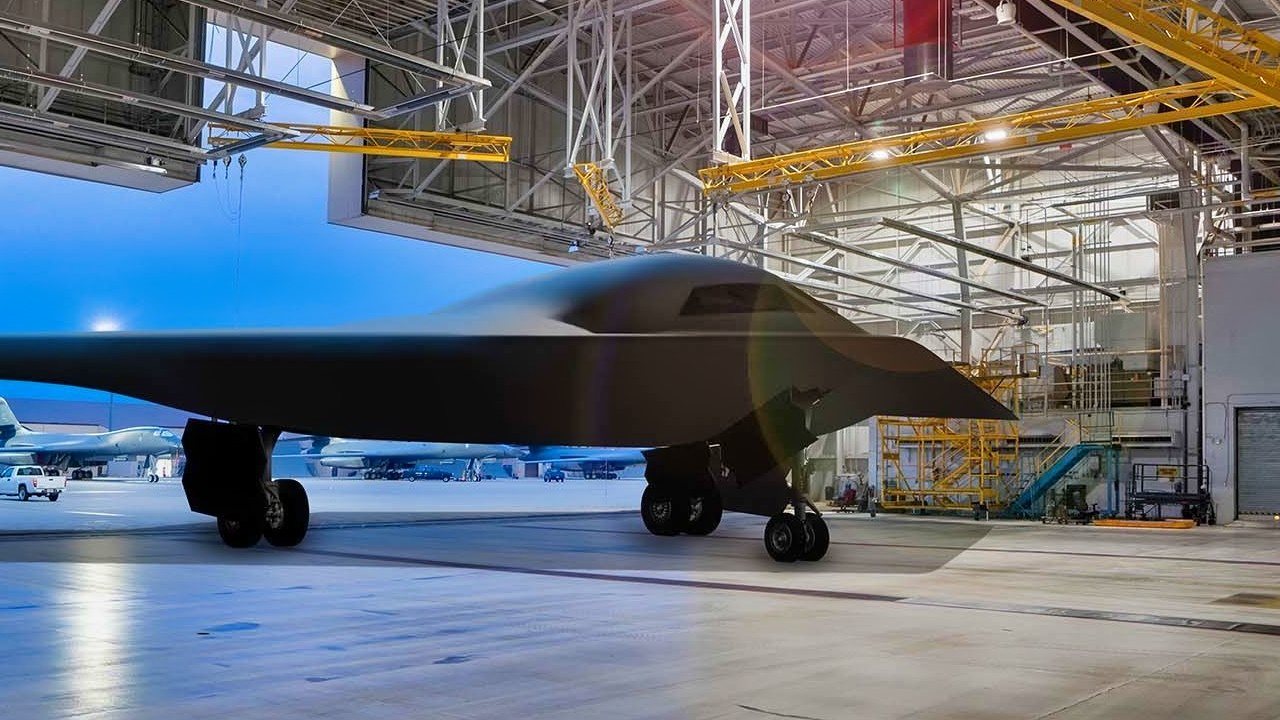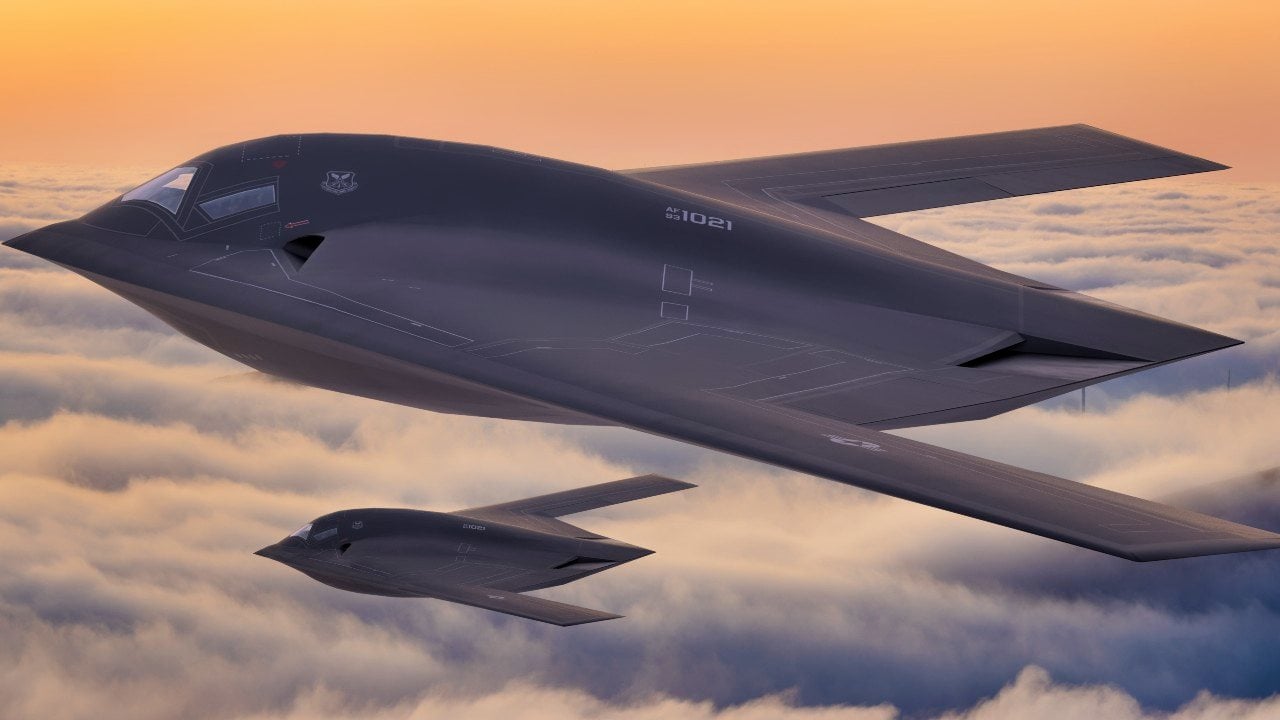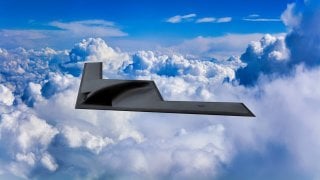The B-21 Raider Bomber Has 'No Margin for Error'
The Northrop Grumman B-21 Raider, the U.S. Air Force’s next-generation stealth bomber, is making significant progress in testing and has moved into low-rate initial production. The Raider is expected to replace the aging B-1B Lancer and B-2 Spirit, with at least 100 bombers planned, though some analysts suggest 200 may be needed to counter growing threats from China and Russia.
Why the B-21 Raider Is So Important to the U.S. Air Force: The Northrop Grumman B-21 Raider, the U.S. Air Force’s next-generation stealth bomber, is making significant progress in testing and has moved into low-rate initial production. The Raider is expected to replace the aging B-1B Lancer and B-2 Spirit, with at least 100 bombers planned, though some analysts suggest 200 may be needed to counter growing threats from China and Russia.

-Designed for digital efficiency and future adaptability, the B-21 features open systems architecture for rapid upgrades.
-Bases like Ellsworth, Whiteman, and Dyess are preparing to host the new bombers as they become operational later this decade.
Why the B-21 Raider is Key to America’s Future Air Superiority
It was less than two years ago that the Northrop Grumman B-21 Raider was officially unveiled to the world and just over a year ago the advanced flying-wing strategic bomber made its first flight. It is now in low-rate initial production and is on track to enter service well before the end of the decade.
The B-21 Raider will gradually replace the aging Rockwell B-1B Lancer and Northrop B-2 Spirit in the coming decade. Current plans call for the Air Force to acquire at least 100 of the advanced bombers, yet some military analysts have called for the air service to purchase at least 200 Raiders to address threats from near-peer adversaries, notably China and Russia.
Both of those nations are also reported to be developing their own long-range strategic bombers. Currently, only China, Russia, and the United States operate such military aircraft – but Australia has also expressed interest in acquiring the Raider to help deter Chinese aggression in the Indo-Pacific.
Flight Tests Continue for B-21 Raider
The Raider is now in the final stages of its development, and last week Northrop Grumman announced that the program is making "great progress as the team executes a robust flight test campaign and scales into production."
The aerospace firm noted that its "program management approach" for the bomber has been centered "around productibility and adoption of digital technology." The ultimate goal is to "deliver an effective, affordable system to the warfighter that is adaptable to future threats."
"Overall, I am pleased to see the performance of our test jet. The handling qualities are better than expected coming out of the simulated environment – validating the accuracy of the digital models the team has developed and analyzed over many years," explained Chris "Hoss" Moss, B-21 Raider test pilot, Northrop Grumman.
"Flight test is an exciting time, and we’re making great progress on B-21," added Tom Jones, corporate vice president and president, Northrop Grumman Aeronautics Systems. "The CTF team has demonstrated we can execute multiple flight test events within the span of a week. Northrop Grumman’s digital ecosystem is enabling that progress, allowing us to analyze test data, make updates and return to flight test with speed and efficiency."
Transition From Testing to Production
The B-21 Raider has been touted as being the most advanced bomber aircraft ever built – but it also has the dubious distinction of being the most expensive. That has resulted in concerns that the United States Air Force would be hard-pressed to buy enough of the Raider bombers in coming years.
However, in February, Pentagon acquisition and sustainment chief William LaPlante said the B-21 Raider was structured for a low production rate to make it less vulnerable to budget cuts. While speaking at a virtual RAND event, LaPlante noted that the B-21 program was "designed to be resilient to Washington turbulence."
In addition, the initial prototype aircraft were built on the same lines, using the same tools and processes that are now building the eventual production aircraft.
"The B-21 Raider was to build the first test aircraft like the production aircraft. Transitioning away from a standard industry practice of taking a demonstration-like vehicle to flight test, the B-21 workforce is already familiar with production tooling and materials and has come forward with innovative ways to establish repeatable processes for an optimal build," Northrop Grumman explained.
That approach has enabled production engineers and technicians to capture lessons learned and apply them directly to follow-on aircraft, driving home a focus on repeatability, producibility, and quality. The Raider was also designed with an open systems architecture that would enable rapid future capability integration to keep pace with the highly contested threat environment.
"We are expanding the use of augmented reality tools and advanced robotics to drive efficiency and accuracy with repeatable, precision processes," Jones continued. "Northrop Grumman is finding innovative ways to introduce advanced technologies in a restricted manufacturing environment today, while paving the way for sustainment processes at the depot and flight line of the future over the B-21 program life cycle."
The Bases Are Also Ready
Ellsworth Air Force Base (AFB), South Dakota, is also set to become the Main Operating Base and formal training unit for the future backbone of the bomber fleet.
Earlier this month, Secretary of the Air Force Frank Kendall also approved the second and third basing locations for the Air Force's newest bomber – and as expected that will include Whiteman AFB, Missouri; and Dyess AFB, Texas. Each of those bases will receive aircraft as they become available.

Author Experience and Expertise: Peter Suciu
Peter Suciu is a Michigan-based writer. He has contributed to more than four dozen magazines, newspapers, and websites with over 3,200 published pieces over a twenty-year career in journalism. He regularly writes about military hardware, firearms history, cybersecurity, politics, and international affairs. Peter is also a Contributing Writer for Forbes and Clearance Jobs. You can follow him on Twitter: @PeterSuciu. You can email the author: [email protected].
Image Credit: Creative Commons and/or Shutterstock.


